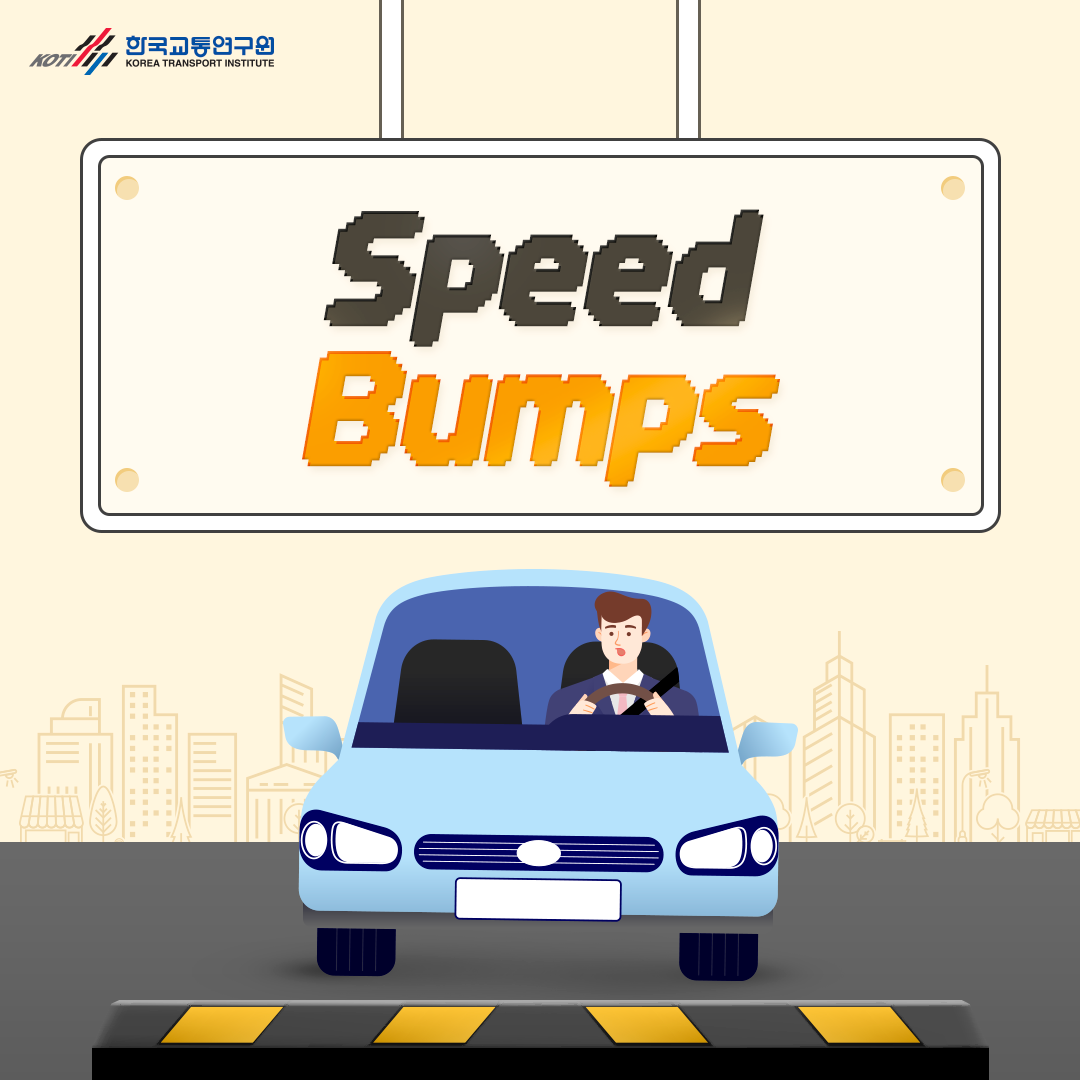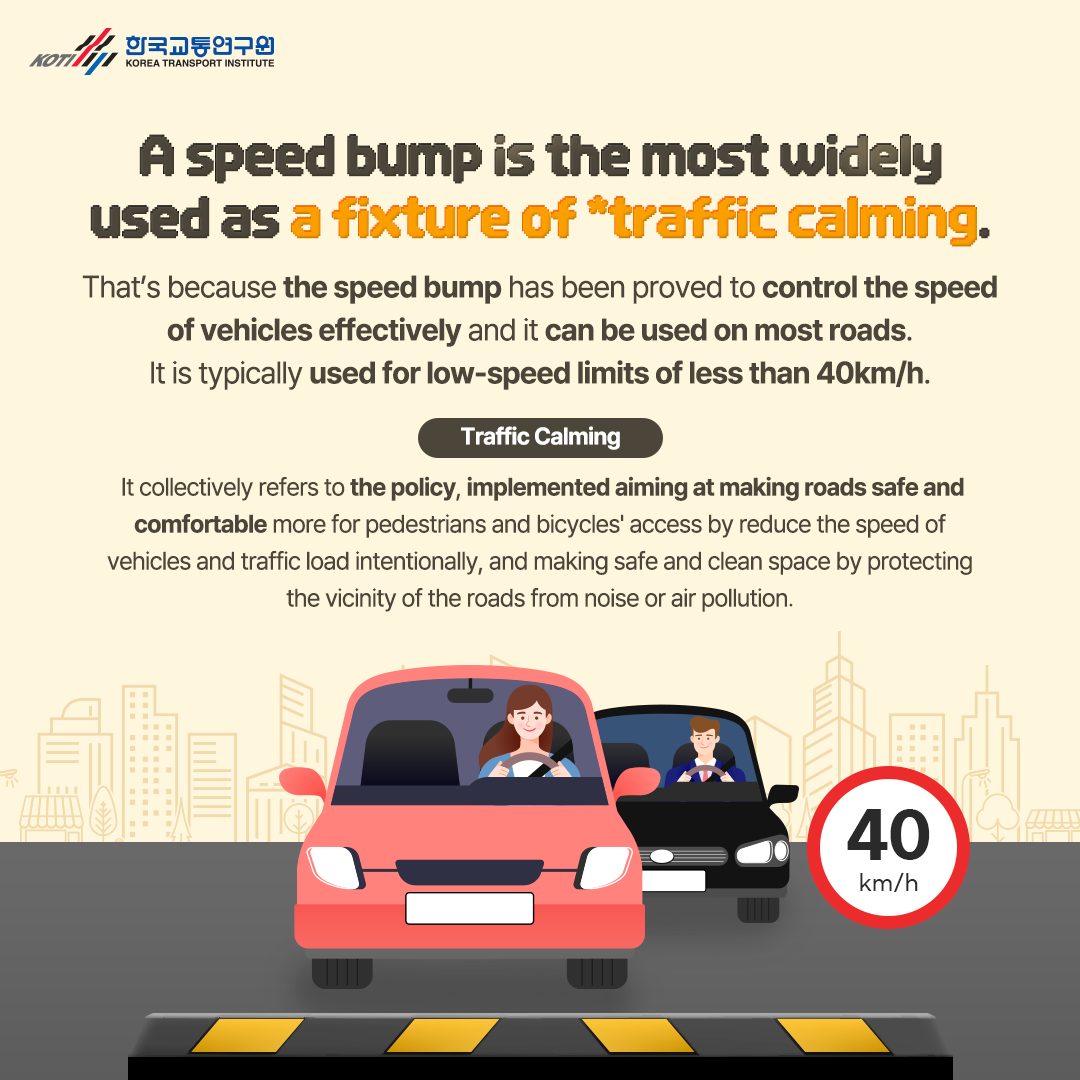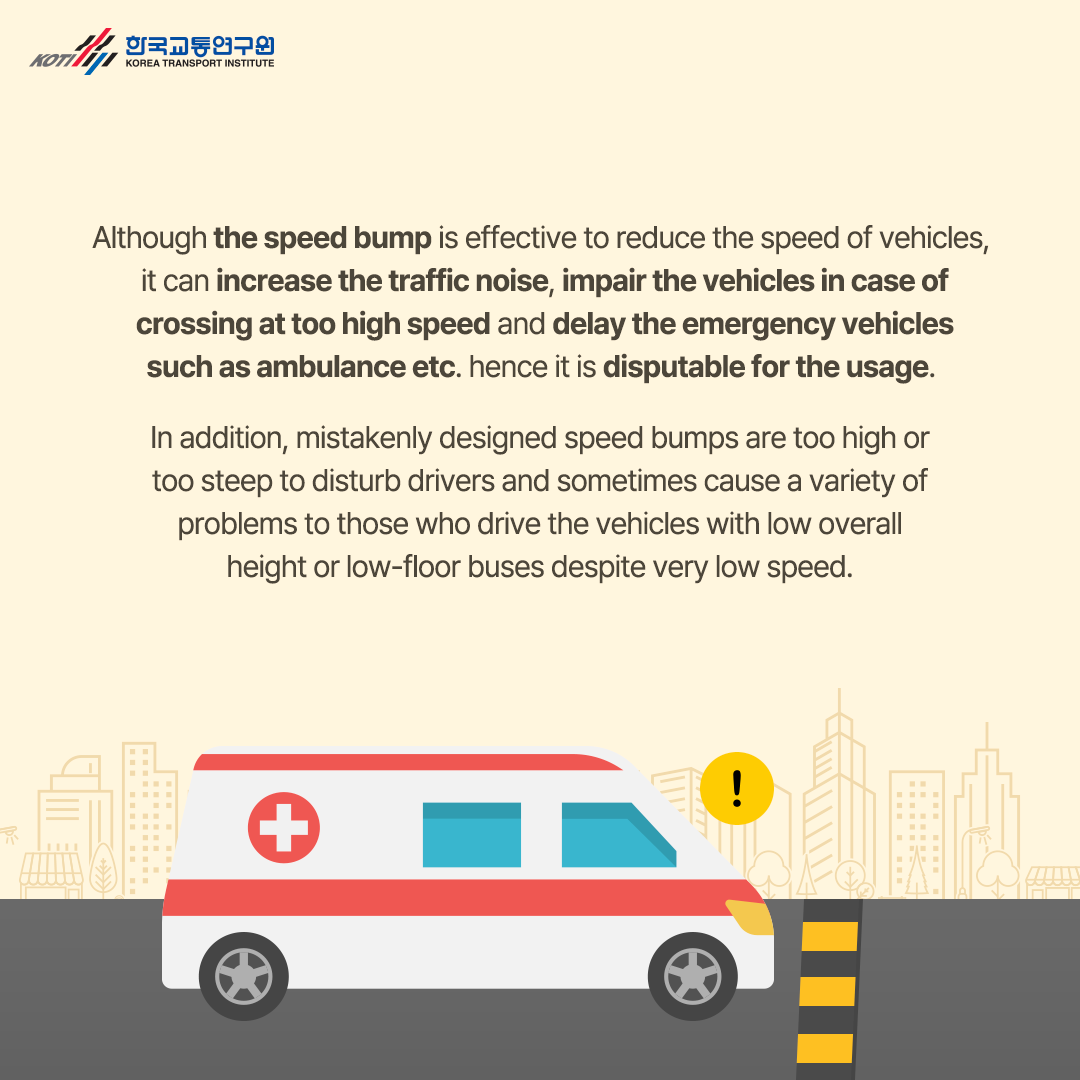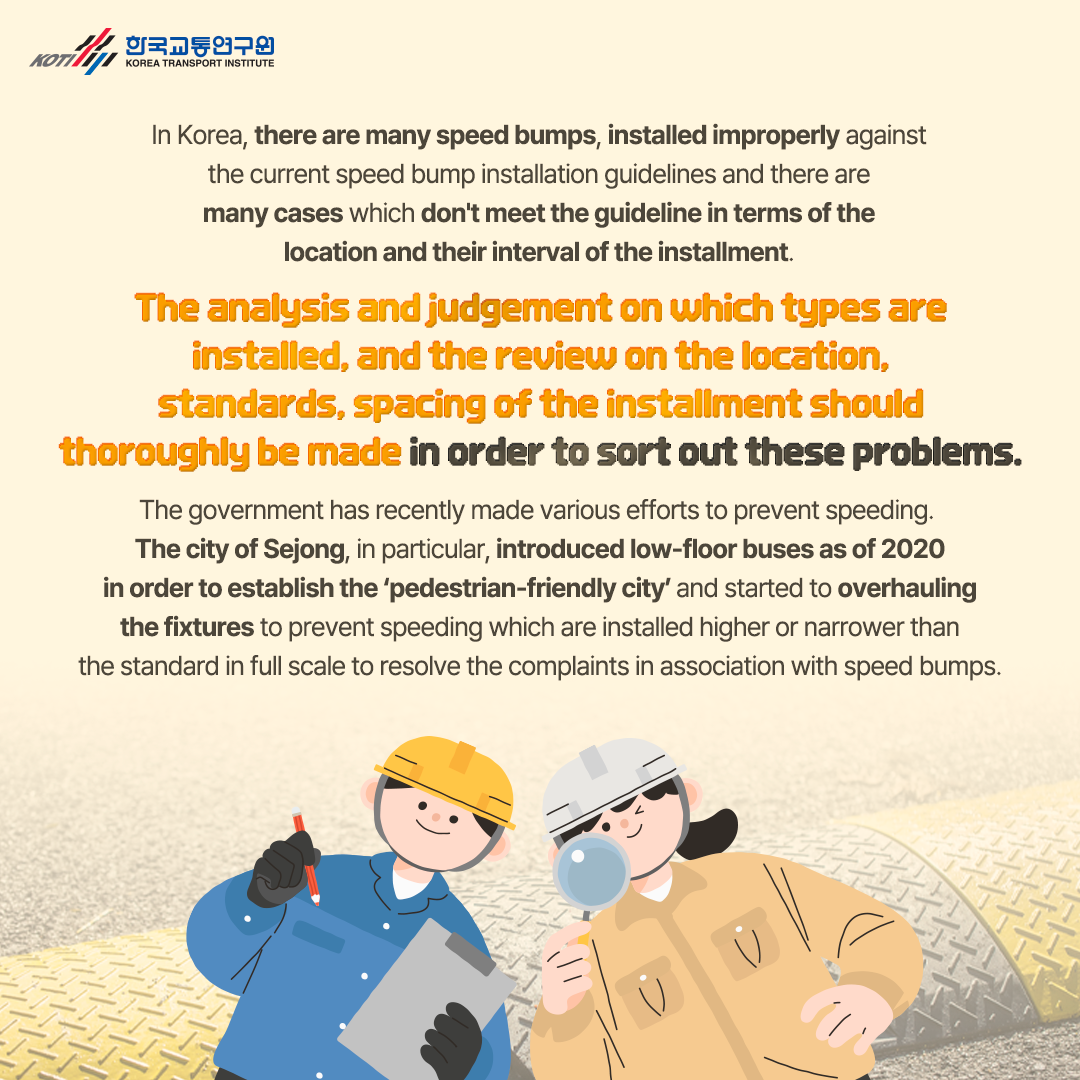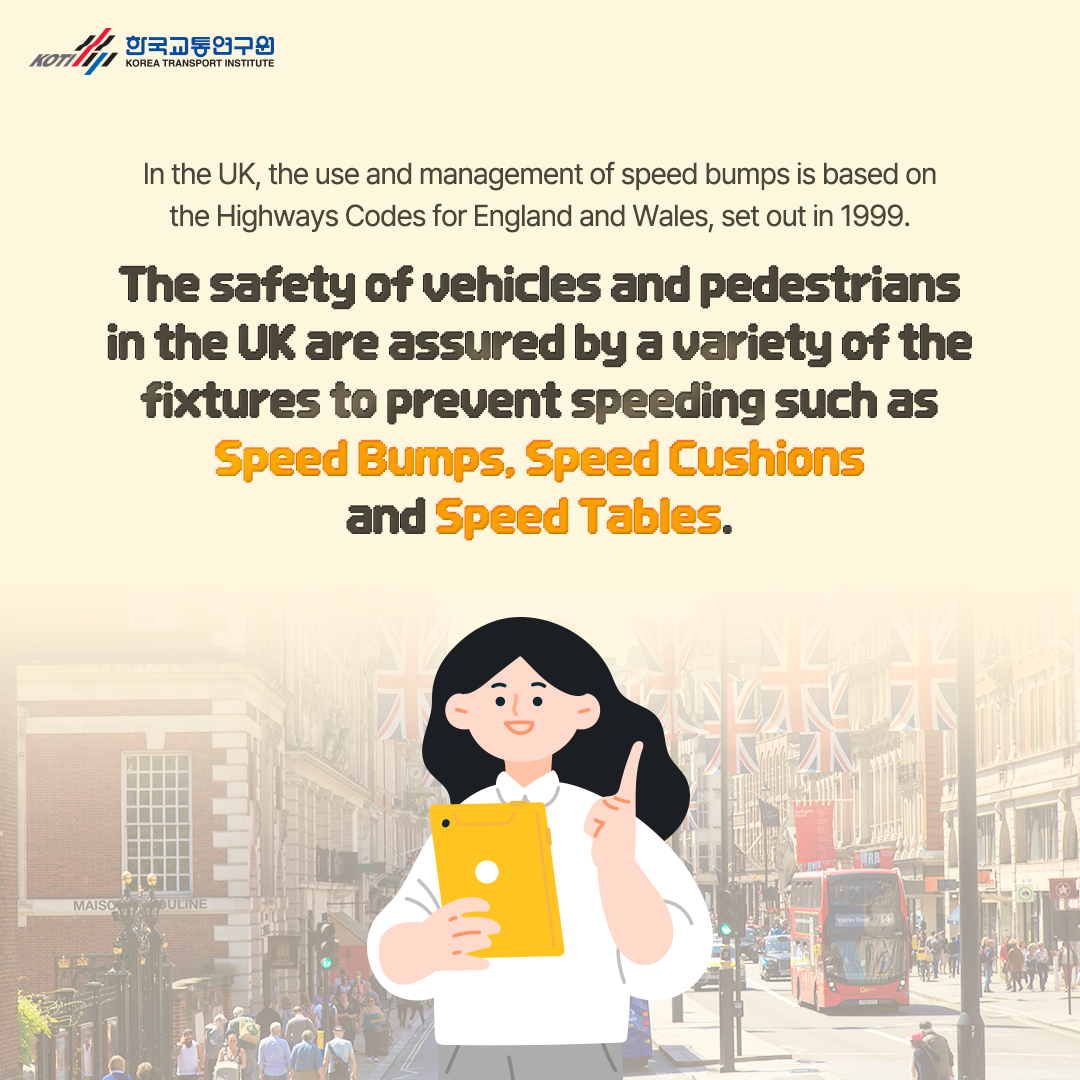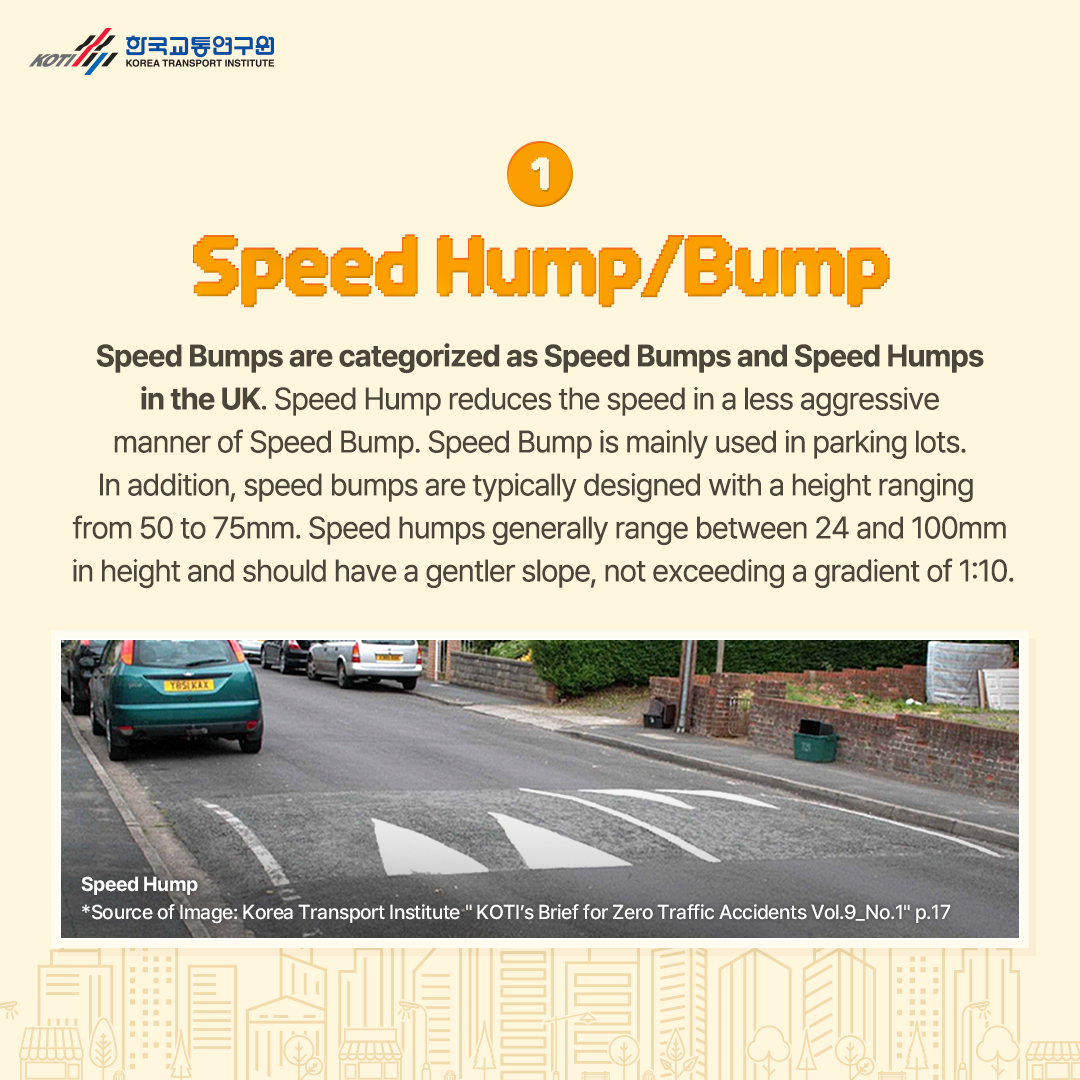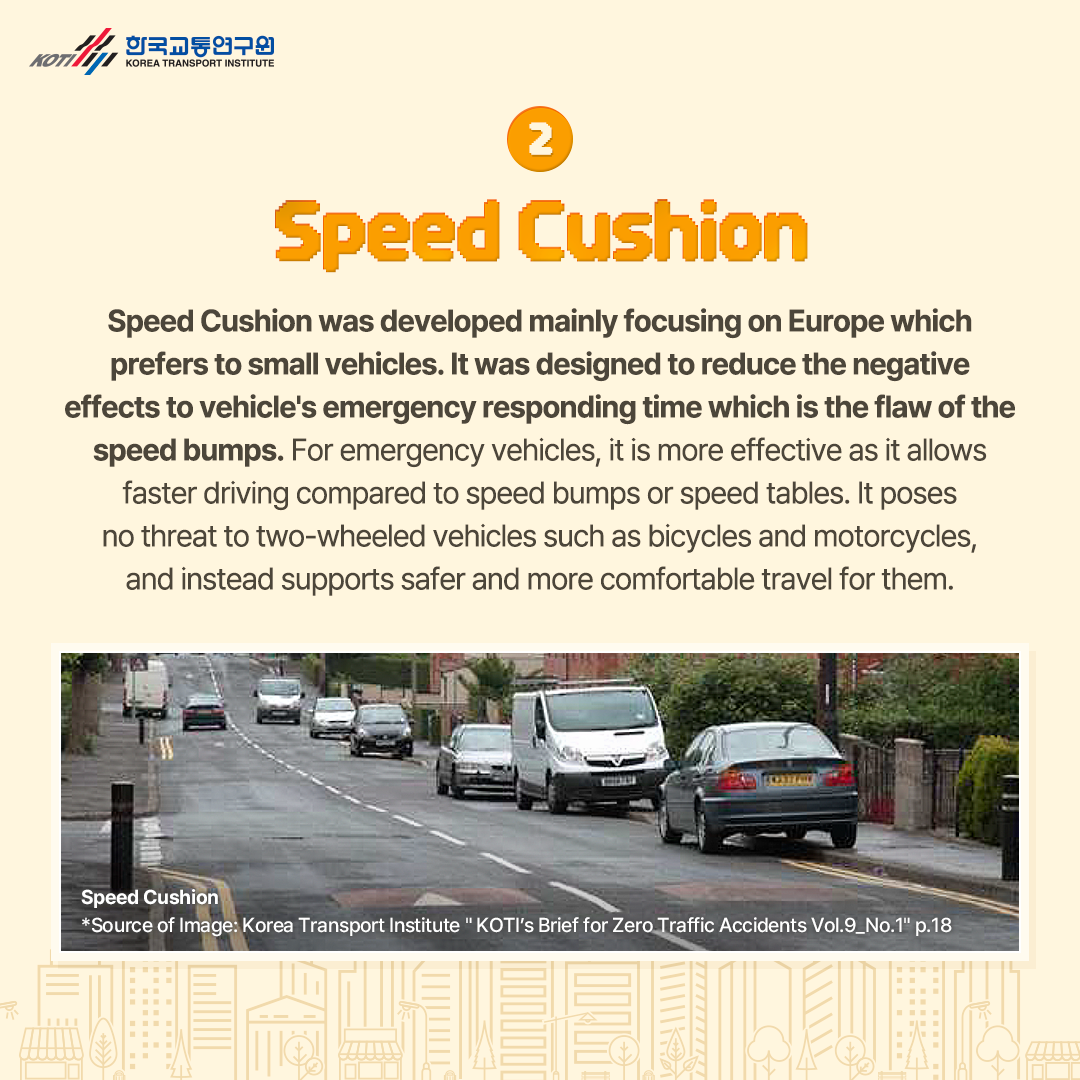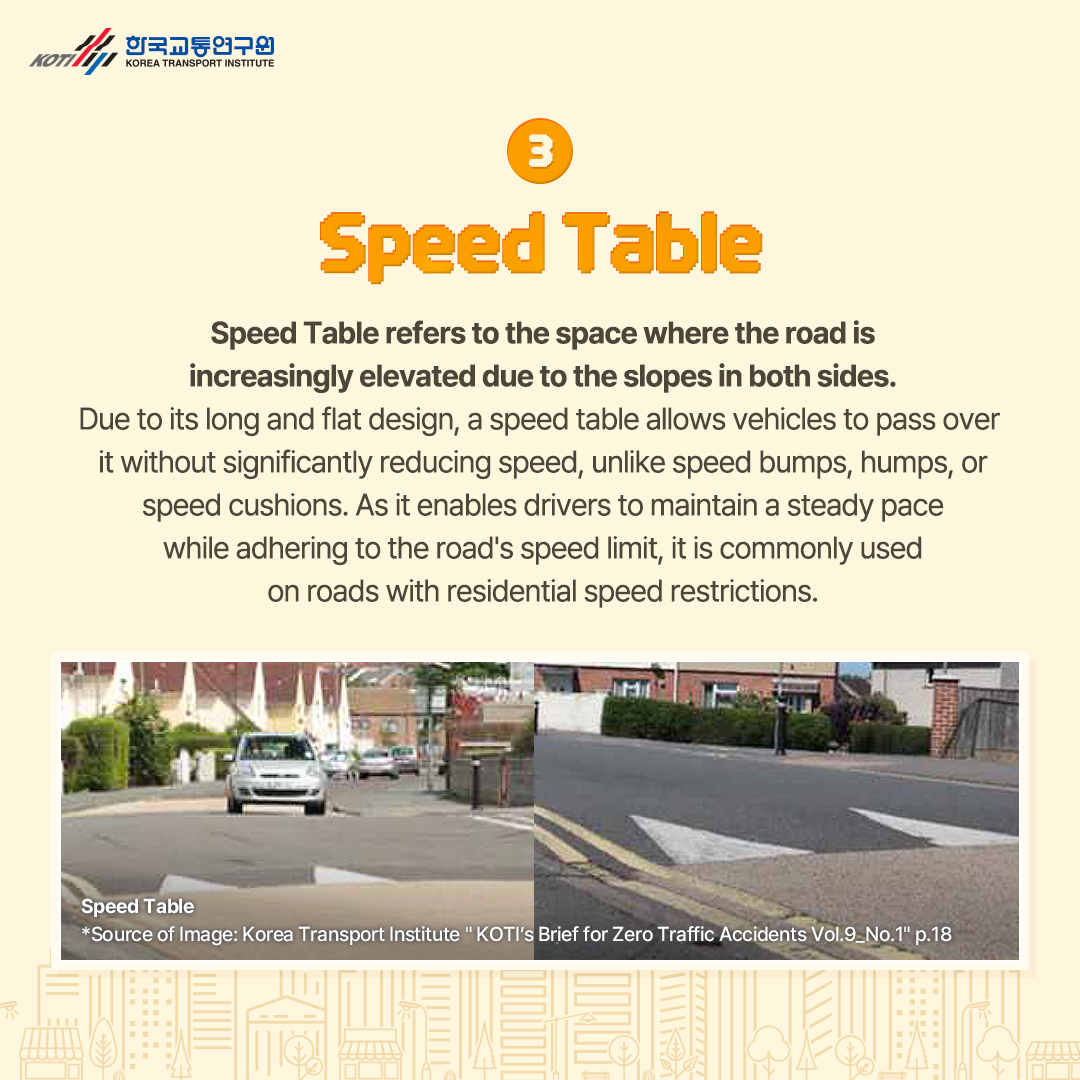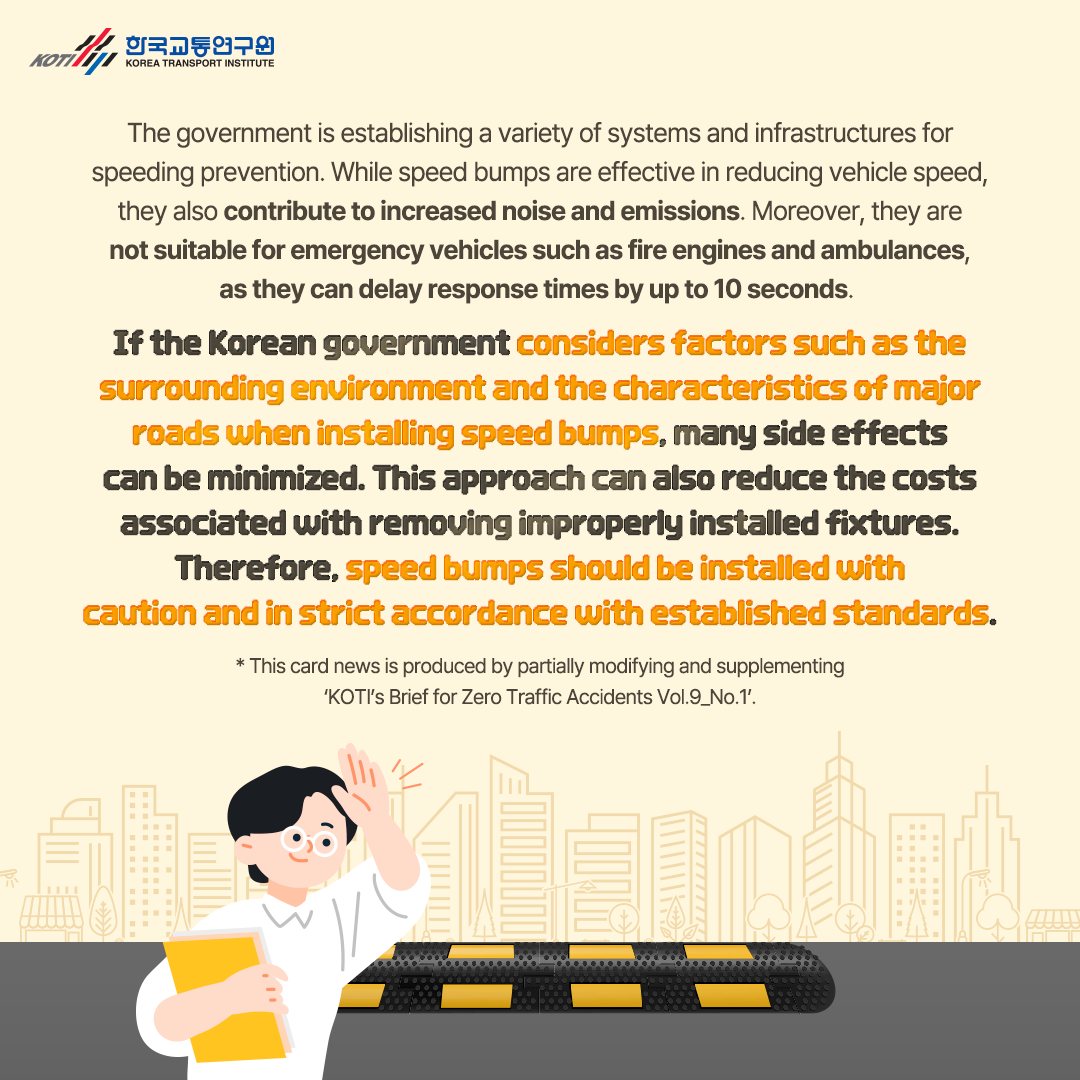Card News

NEWS
KOTI - Korea Transport institute-
[Speed Bumps]
A speed bump is the most widely used as a fixture of traffic calming. That’s because the speed bump has been proved to control the speed of vehicles effectively and it can be used on most roads. It is typically used for low-speed limits of less than 40km/h. Traffic Calming: It collectively refers to the policy, implemented aiming at making roads safe and comfortable more for pedestrians and bicycles' access by reduce the speed of vehicles and traffic load intentionally, and making safe and clean space by protecting the vicinity of the roads from noise or air pollution.
Although the speed bump is effective to reduce the speed of vehicles, it can increase the traffic noise, impair the vehicles in case of crossing at too high speed and delay the emergency vehicles such as ambulance etc. hence it is disputable for the usage. In addition, mistakenly designed speed bumps are too high or too steep to disturb drivers and sometimes cause a variety of problems to those who drive the vehicles with low overall height or low-floor buses despite very low speed.
In Korea, there are many speed bumps, installed improperly against the current speed bump installation guidelines and there are many cases which don't meet the guideline in terms of the location and their interval of the installment.
The analysis and judgement on which types are installed, and the review on the location, standards, spacing of the installment should thoroughly be made in order to sort out these problems.
The government has recently made various efforts to prevent speeding. The city of Sejong, in particular, introduced low-floor buses as of 2020 in order to establish the ‘pedestrian-friendly city’ and started to overhauling the fixtures to prevent speeding which are installed higher or narrower than the standard in full scale to resolve the complaints in association with speed bumps.
In the UK, the use and management of speed bumps is based on the Highways Codes for England and Wales, set out in 1999.
The safety of vehicles and pedestrians in the UK are assured by a variety of the fixtures to prevent speeding such as Speed Bumps, Speed Cushions and Speed Tables.
1. Speed Hump/Bump
Speed Bumps are categorized as Speed Bumps and Speed Humps in the UK.
Speed Hump reduces the speed in a less aggressive manner of Speed Bump.
Speed Bump is mainly used in parking lots.
In addition, speed bumps are typically designed with a height ranging from 50 to 75 mm. Speed humps generally range between 24 and 100 mm in height and should have a gentler slope, not exceeding a gradient of 1:10.
* Source of Image: Korea Transport Institute " KOTI’s Brief for Zero Traffic Accidents Vol.9_No.1" p.17
2. Speed Cushion
Speed Cushion was developed mainly focusing on Europe which prefers to small vehicles. It was designed to reduce the negative effects to vehicle's emergency responding time which is the flaw of the speed bumps.
For emergency vehicles, it is more effective as it allows faster driving compared to speed bumps or speed tables. It poses no threat to two-wheeled vehicles such as bicycles and motorcycles, and instead supports safer and more comfortable travel for them.
3. Speed Table
Speed Table refers to the space where the road is increasingly elevated due to the slopes in both sides.
Due to its long and flat design, a speed table allows vehicles to pass over it without significantly reducing speed, unlike speed bumps, humps, or speed cushions. As it enables drivers to maintain a steady pace while adhering to the road's speed limit, it is commonly used on roads with residential speed restrictions.
The government is establishing a variety of systems and infrastructures for speeding prevention.
While speed bumps are effective in reducing vehicle speed, they also contribute to increased noise and emissions. Moreover, they are not suitable for emergency vehicles such as fire engines and ambulances, as they can delay response times by up to 10 seconds.
If the Korean government considers factors such as the surrounding environment and the characteristics of major roads when installing speed bumps, many side effects can be minimized. This approach can also reduce the costs associated with removing improperly installed fixtures. Therefore, speed bumps should be installed with caution and in strict accordance with established standards.
* This card news is produced by partially modifying and supplementing ‘KOTI’s Brief for Zero Traffic Accidents Vol.9_No.1’.
